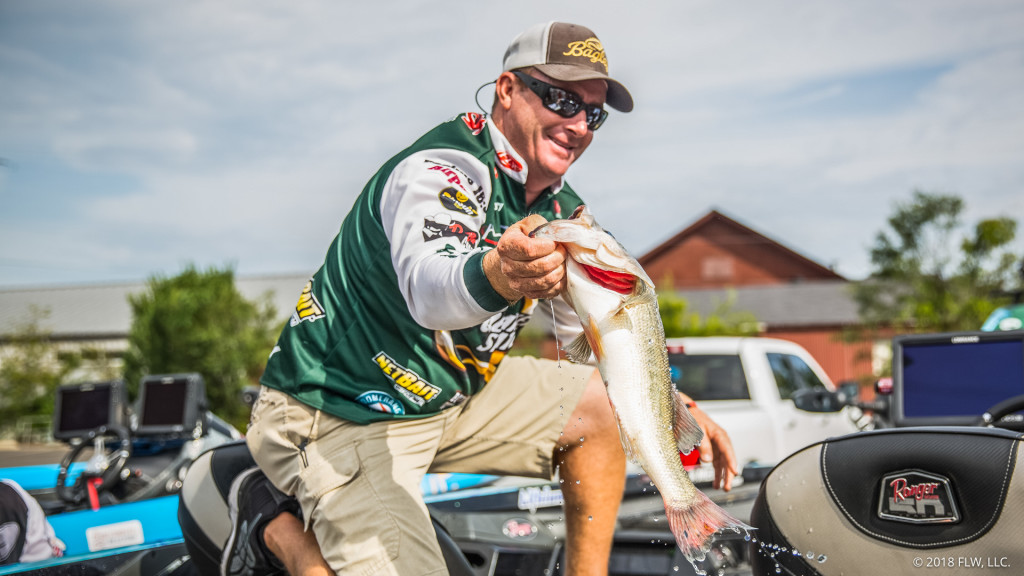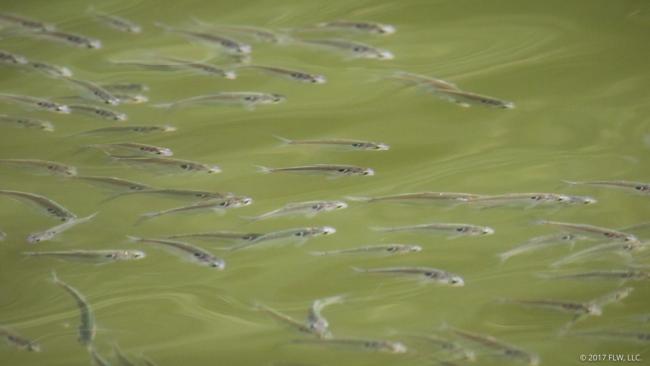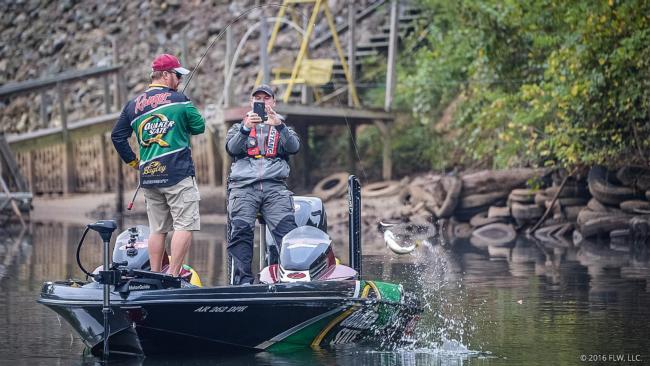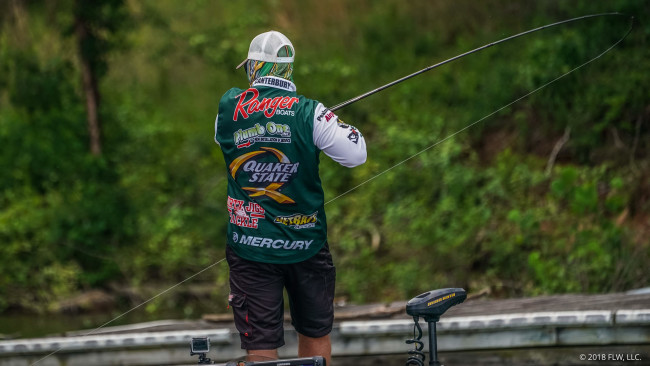Canterbury’s Early Fall Buzzbait Tips
How the Alabama pro catches spotted bass and largemouth bass right now

Like flannel shirts and full beards, the buzzbait has enjoyed a popularity resurgence in the last few years. What was once a role player on a pro angler’s roster has returned to the starting lineup thanks to pros such as Scott Canterbury, who’ve learned to modify their buzzbaits to work in more situations, in the process rediscovering how effective the lure is for covering water.
Canterbury says that right now – the late summer and early fall transition period – is one of the best times to sling a buzzbait as bass are looking up to chase shad and willing to feed on top. He’s got it dialed in with a system that’ll catch big bass from now until winter.

Watch for baitfish movements
When shad transition from deep to shallow in September, Canterbury says the buzzbait bite starts to improve on the Coosa River impoundments near his home. Their transition is usually spurred along by some environmental changes that anglers anywhere can watch for.
“The nights are getting longer,” says Canterbury. “The water temperature hasn’t dropped a whole lot, but the nights are getting longer, and there are a few fish starting to get shallow. As that happens, a buzzbait is a good tool to cover water.
“All summer you don’t really see bait on the surface,” he adds. “And now there’s a lot of bait getting on the surface and a little bit of schooling going on.”
Canterbury says more bait and bass will start to move up as the days shorten and the water temperature creeps down. Early fall is just the starting point.

Main-lake nights
Canterbury says that when the shad first go shallow, most of the activity takes place at night on the main lake. In a tournament situation, the morning bite is critical.
“Our Coosa River spots and even largemouths will get up shallow on seawalls in the morning. It’s not good for long; mostly the first couple hours. After that you have to find shade,” he says.
Seawalls, as Canterbury mentions, are always good. He also targets willow grass, laydowns and riprap. A 1/2-ounce Dirty Jigs Scott Canterbury Pro Buzz is his go-to buzzbait for open water, though he’ll also use a “traditional” buzzbait with a skirt. The key is a big blade that makes it easy to keep the buzzbait on the surface. When the bite is tough or fish are missing the bait, the Alabama pro swaps to a NetBait Spanky Swimbait trailer.
“I stay out and hit them [seawalls] at, like, a 45-degree angle. I don’t throw straight at a 90,” Canterbury says. “A lot of those fish won’t actually hit it right at the wall, so a 45 lets me cover water and still fish it out from the bank.”
Covering water is important and one of the reasons a buzzbait is a good choice. Canterbury can blitz through key areas quickly to capitalize on the early bite. Then once the morning seawall pattern fizzles out, switching to shade extends the bite – sometimes all day. Docks and overhanging trees are the key areas to target.

Skip the shade
Here’s where Canterbury’s buzzbait knowledge benefits him. He spent so much time tinkering with buzzbaits to get them to skip easily and run true that he eventually just designed his own: the Pro Buzz. It works for open water, but its real benefit is for going where other buzzbaits (and most other topwaters) can’t.
“You can actually skip it up under docks and overhanging trees. The presentation is the key to that,” says Canterbury.
The 1/4-ounce model specifically is the one Canterbury likes to skip because it has a small blade. Larger blades “catch” too much water and spoil the skipping presentation. The Pro Buzz also comes packaged with a Bruiser Baits Thrasher, which was designed with no belly slit specifically as a buzzbait trailer. Canterbury says a belly slit on a trailer makes the combo harder to skip.
His gear selection includes 40-pound-test P-Line TCB braid, a 7-3, medium-heavy Halo rod and a 7.3:1 Ardent Apex Grand reel with the brakes completely disengaged.
An important part of Canterbury’s presentation is the skip itself, and not just for accessing hard-to-reach areas. He believes the bait skittering across the surface gets the attention of the bass.
“The farther you can skip it, it seems like the more bites you get,” he says. “As soon as you start to retrieve it a bass will kill it a lot of times. They track it on the way in. Then, when it turns [when the retrieve starts], it’s coming back at them. I think that’s one thing that’s drawing a lot of strikes. I’m convinced that actually gets you a few extra bites every day versus casting it right to where you want it. We did that with a swimming jig in the willow grass over the years.”
Buzzbait colors
Black, white and chartreuse/white are Canterbury’s favorite buzzbait skirt and trailer colors for fall (though in the spring he says you should try slinging a bubble gum pink one).
“A lot of people say the darker the day, the darker the bait, but water clarity has a lot to do with it,” he says. “We have really clear water. If you throw something white, they might want it, but a lot of times it shows up really ‘big’ in the water. If you go to a black bait, it looks smaller and is more of a finessy bait. You have to experiment. Same thing for blade combos – silver or gold. There’s usually some combo you figure out they want.”

Be ready to flip, too
If you can’t get the midday dock-fishing pattern going with buzzbaits, try flipping a jig.
“We flip a lot of docks as the sun gets up, and fish a lot of brush piles,” Canterbury says. “Most of those fish go down [under the docks]. A little later in the year they’ll stay up, and you can catch them better on the buzzbait. When they go down, it’s more of a jig deal; a little slower fishing.”

Follow fish to the creeks
In Crimson Tide country where Canterbury lives, the buzzbait bite starts on the main lake and then transitions into the creeks. It’s smart to check those areas periodically to keep tabs on the progression.
“A little bit later in the fall they will get up on the seawalls in the creeks, and that’s when it gets really good to me,” he says.